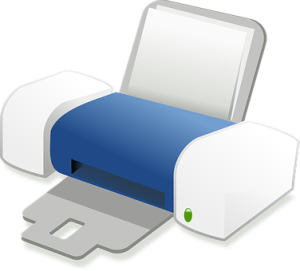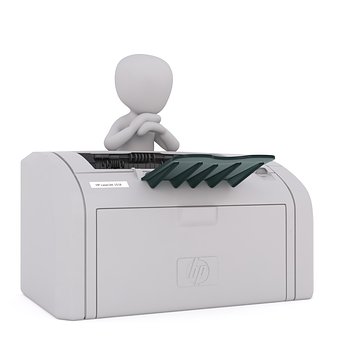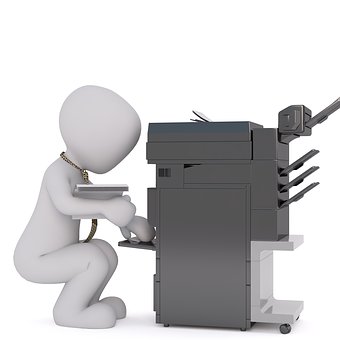Printer Setup
In today’s digital age, printers remain essential tools for turning digital documents into tangible copies. Whether you need to print important reports for work, school assignments, or cherished photographs, setting up wireless printer is a fundamental skill. However, the process of printer setup can sometimes be a source of frustration for many.
In this guide, we will walk you through the step-by-step process of setting up printer, from unpacking the device to troubleshooting common issues. Whether you are a seasoned tech enthusiast or a novice, this guide is designed to help you get your printer up and running smoothly. By the end of this guide, you’ll be equipped with the knowledge to tackle any printer setup task confidently, ensuring that your printing needs are met efficiently. Let’s dive in and demystify the printer setup process!
Set up Printer – Steps:
Setting up Wireless printer can vary depending on the type and model of the printer you have. Here are the steps to set up Wireless printer:
-
Unpack the Printer:
To set up wireless printer, carefully unpack printer from its box and remove all packaging materials. Be sure to keep any documentation and driver CDs that came with the printer.
-
Place the Printer:
For setting up printer, find a suitable location for your printer near a power outlet and your computer. Make sure it’s on a stable surface and that there’s enough space for paper to feed in and out.
-
Power On the Printer:
Plug the printer’s power cord into a power outlet & connect it to the printer. Turn on the printer using its power button.
-
Install Printer Ink or Toner Cartridges:
If your printer uses ink or toner cartridges, follow the manufacturer’s instructions to install them. Usually, this involves opening a compartment or lid, removing protective tapes, and carefully inserting the cartridges.
-
Load Paper in Printer:
To set up wireless printer, open the paper tray or feeder, and load it with the appropriate size and type of paper. To correctly match the paper size, adjust the paper guidelines.

-
Connect the Printer to Computer:
Numerous printers can be connected to computer in a variety of ways:
-
USB Cable:
Plug one end of the USB cable into the printer and the other end into an available USB port on your computer.
-
Wi-Fi (Wireless):
Follow the printer’s instructions to connect it to your Wi-Fi network. This typically involves navigating through the printer’s settings menu on its display panel.
-
Ethernet Cable (Wired):
If your printer supports Ethernet connectivity, connect one end of an Ethernet cable to the printer and the other end to your router or network switch.
-
-
Install Printer Drivers:
For setting up wireless printer, insert the printer driver CD into your computer’s CD/DVD drive or download the latest drivers from the printer manufacturer’s website. Follow the on-screen guide to install printer drivers. This step is crucial for your computer to recognize and communicate with the printer.
-
Set Printer as Default (Optional):
After printer driver download, you can set the printer as the default printer on your computer. This ensures that when you print a document, it will be sent to the correct printer automatically.
-
Test Printer:
Print a test page or a sample document to ensure that the printer is functioning properly. This will also help you verify that the ink or toner levels are sufficient.
-
Install Additional Printer Software (Optional):
Depending on your printer’s features, you may want to install additional software provided by the manufacturer, such as scanning or faxing utilities.
-
Calibrate and Configure Printer:
To set up wireless printer, access the printer settings through your computer or the printer’s control panel to configure preferences such as print quality, paper size, and duplex (double-sided) printing if desired.
-
Printer Troubleshoot (If Necessary):
If you encounter any problem with printer setup, consult the printer’s user for troubleshooting guidance.
Once you’ve completed these steps, your printer should be set up and ready to use. Keep the user manual and any additional documentation for future reference, and make sure to replace ink or toner cartridges as needed to maintain print quality.
Common Printer Setup Issues:
Setting up printer can sometimes be a straightforward process, but it can also be riddled with various issues that might frustrate users. Here are some common printer setup issues that people often encounter:
-
Printer Driver Installation Problems:
Printer driver download can be challenging, especially if the correct drivers are not readily available or if there are compatibility issues with the operating system.

-
Printer Connection Issues:
Connecting the printer to the computer or network can be problematic. Whether it’s through a USB cable, Wi-Fi, or Ethernet, getting the connection right can be a source of frustration.
-
Printer Paper Jams:
Paper jams are a frequent issue. They may result in damaged paper, broken printer parts, and halted printing if they are not addressed properly.
-
Printer Ink or Toner Troubles:
Issues related to ink or toner cartridges, such as low ink levels, incompatible cartridges, or dried-out ink, can cause problem with printer setup process.
-
Incorrect Printer Settings:
Configuring printer settings, such as paper size, print quality, and duplex printing, can be confusing and may result in undesirable output.
-
Printer Network Configuration:
Connecting a printer to a network, especially in a business or office setting, can involve complex network configurations, IP address issues, or firewall problems.
-
Printer Compatibility Problems:
Compatibility issues can arise between the printer and the software or devices you want to print from, leading to communication errors.
Printer setup issues can be frustrating and time-consuming, often requiring patience, technical expertise, and sometimes professional assistance to overcome. Understanding the nature of these problems and their potential causes can help users better navigate the challenges of setting up a printer.
Printer Setup Issues – Fixed:
Printer setup issues can be frustrating, but many problems can be resolved with a few troubleshooting steps. Here’s a guide on how to fix common printer setup issues:
-
Check Printer Power and Connections:
- Ensure that the printer is powered on and connected to a power source.
- Verify that all cables (USB, Ethernet, power) are securely connected.
- If your printer is wireless, make sure it’s connected to the correct Wi-Fi network and has a stable connection.

-
Restart Device:
Sometimes, simply restarting your printer, computer, and router can resolve connection issues. Turn off each device, wait for a few seconds, and then turn them back on.
-
Verify Printer Status:
Check the printer’s display panel or status lights for any error messages or warnings. Refer to the printer’s user manual or the manufacturer’s website to interpret these messages and take appropriate action.
-
Check for Printer Paper Jam Issues:
Check for paper jams or other blockages in the paper path by opening the printer’s access doors. Clear any jams carefully and follow the printer’s instructions to resume printing.
-
Inspect Printer’s Ink or Toner Cartridges:
Ensure that ink or toner cartridges are properly installed and have sufficient ink or toner. Replace any empty or low cartridges as needed.
-
Printer Driver and Software Issues:
- Reinstall the printer drivers on your computer from the manufacturer’s website, download the most recent printer drivers, and then adhere to the setup instructions.
- Make sure you’ve selected the correct printer as your default printer in your computer’s settings.
-
Printer Network Connection Issues (Wireless Printers):
- If using Wi-Fi, check the printer’s Wi-Fi connection settings. Make sure it has a strong signal and is linked to the right network.
- Restart your router to ensure a stable Wi-Fi connection.
- Try temporarily connecting the printer via a USB cable to see if it prints correctly, as this can help isolate a Wi-Fi issue.
Remember to document any error messages or issues you encounter, as this information can be helpful when seeking assistance from customer support or technicians. Patience and systematic troubleshooting are key to resolving most printer setup issues.
Conclusion:
In conclusion, setting up a printer doesn’t have to be a daunting task. You can be sure that setting up your printer will go smoothly and successfully by following the instructions provided in this tutorial. From unpacking and connecting the printer to installing drivers and troubleshooting common issues, the process becomes manageable.
Remember that every printer model may have unique features and setup requirements, so consulting the user manual provided by the manufacturer is always a good practice. To know more about our support services you can navigate to website’s Homepage.
